Henry Harrop (1841-1918) Crossing the Western Plains
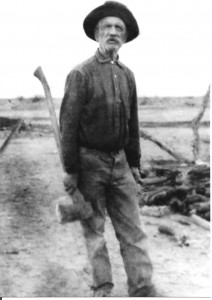 Henry Harrop is the father of Phoebe Lorraine Harrop Black. He was born 5 Feb 1841 in Mexborough, Yorkshire, England; christened 28 Feb 1841 in Mexborough, Yorkshire, England; died Jan 1918 in Chandler, Maricopa, Arizona, United States; buried in Mesa, Maricopa, Arizona, United States, son of John Harrop and Sarah Lovett. He married Sarah, an Indian girl born 6 Apr 1850 and raised by Richard and Phoebe Benson, Parowan, Utah, on 23 Nov 1866 in Parowan, Iron, Utah. died 1881 in Walker, Navajo, Arizona; buried in Snowflake, Navajo, Arizona, United States. Married Sarah Littlefield, in the St. George LDS Temple on 7 Mar 1879. Married Livara Jarvis in 1884 in Silver Creek, Navajo, Arizona, United States. Married Cynthia Erminnie Harmon on 2 Nov 1898 in Mesa, Maricopa, Arizona, United States. Cynthia was born 19 May, 1866 in Coalville, Summit, Utah, United States; christened 20 Feb 1872 in Kaysville, Davis, Utah, United States; died 2 Nov 1905 in Colonia Juarez, Chihuahua, Mexico; buried 5 Nov 1905 in Colonia Juarez, Chihuahua, Mexico, daughter of Norton (Edward) (—) Harmon and Thankful Loretta Tanner Crossing the Plains
Henry Harrop is the father of Phoebe Lorraine Harrop Black. He was born 5 Feb 1841 in Mexborough, Yorkshire, England; christened 28 Feb 1841 in Mexborough, Yorkshire, England; died Jan 1918 in Chandler, Maricopa, Arizona, United States; buried in Mesa, Maricopa, Arizona, United States, son of John Harrop and Sarah Lovett. He married Sarah, an Indian girl born 6 Apr 1850 and raised by Richard and Phoebe Benson, Parowan, Utah, on 23 Nov 1866 in Parowan, Iron, Utah. died 1881 in Walker, Navajo, Arizona; buried in Snowflake, Navajo, Arizona, United States. Married Sarah Littlefield, in the St. George LDS Temple on 7 Mar 1879. Married Livara Jarvis in 1884 in Silver Creek, Navajo, Arizona, United States. Married Cynthia Erminnie Harmon on 2 Nov 1898 in Mesa, Maricopa, Arizona, United States. Cynthia was born 19 May, 1866 in Coalville, Summit, Utah, United States; christened 20 Feb 1872 in Kaysville, Davis, Utah, United States; died 2 Nov 1905 in Colonia Juarez, Chihuahua, Mexico; buried 5 Nov 1905 in Colonia Juarez, Chihuahua, Mexico, daughter of Norton (Edward) (—) Harmon and Thankful Loretta Tanner Crossing the Plains 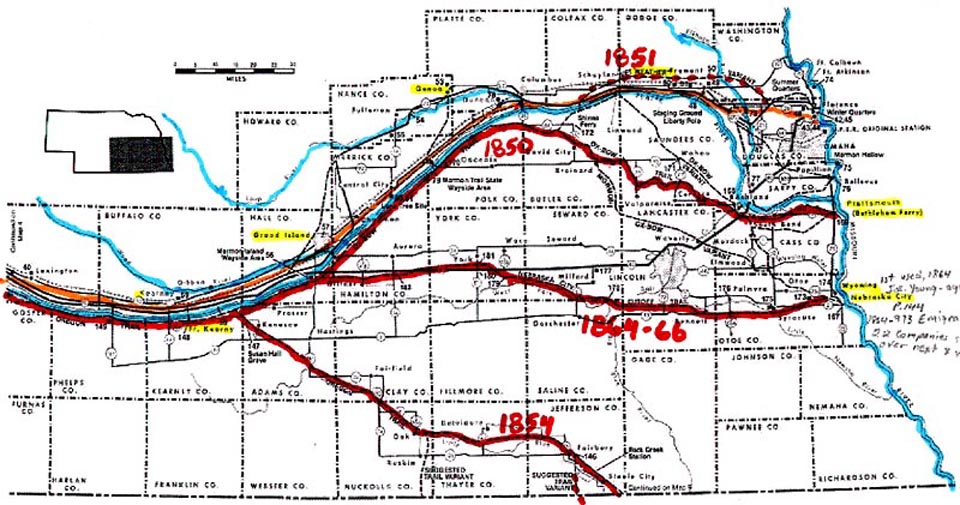 Henry Harrop departed for Salt Lake in 1864 from the now forgotten tent community of Wyoming, Nebraska, The departure point had been moved from Florence Nebraska a year earlier. Florence, originally called Winter Quarters, was where Mormon immigrants originally departed from to go West. The principal reasons for the Mormons’ switch from Florence to Wyoming seems to have been because emigrants from the east could take trains directly to St. Joseph, Missouri, then take an approximately 94-mile riverboat ride to the community of Wyoming. The the cutoff trail shortened the distance from the Missouri River to the area of Fort Kearny by about 50 miles. The cutoff ran 169 miles directly west to Fort Kearny on the Oregon Trail, where the Mormons could either continue on the Oregon Trail or cross the Platte River. Each wagon was pulled by four yoke of oxen or mules and carried about 1,000 pounds of supplies. The community of Wyoming, founded as a river port in 1855, was 45 miles south of Florence (Winter Quarters) and 7 miles north of Nebraska City. The Mormons favored it over Florence because it provided more open area for their staging ground and was well removed from the rough elements of Nebraska City and other lures that might have caused emigrants to not go west. Twenty-two organized Mormon emigrant companies left Wyoming Nebraska during its three-year service (1864-1866). It is estimated that the companies totaled about 6,500 emigrants. Wagons going to Oregon, California, and Utah shared the same trail until they reached the continental divide at South Pass Wyoming. The trip from Wyoming, Nebraska to Salt Lake City Utah was 1,100 miles.
Henry Harrop departed for Salt Lake in 1864 from the now forgotten tent community of Wyoming, Nebraska, The departure point had been moved from Florence Nebraska a year earlier. Florence, originally called Winter Quarters, was where Mormon immigrants originally departed from to go West. The principal reasons for the Mormons’ switch from Florence to Wyoming seems to have been because emigrants from the east could take trains directly to St. Joseph, Missouri, then take an approximately 94-mile riverboat ride to the community of Wyoming. The the cutoff trail shortened the distance from the Missouri River to the area of Fort Kearny by about 50 miles. The cutoff ran 169 miles directly west to Fort Kearny on the Oregon Trail, where the Mormons could either continue on the Oregon Trail or cross the Platte River. Each wagon was pulled by four yoke of oxen or mules and carried about 1,000 pounds of supplies. The community of Wyoming, founded as a river port in 1855, was 45 miles south of Florence (Winter Quarters) and 7 miles north of Nebraska City. The Mormons favored it over Florence because it provided more open area for their staging ground and was well removed from the rough elements of Nebraska City and other lures that might have caused emigrants to not go west. Twenty-two organized Mormon emigrant companies left Wyoming Nebraska during its three-year service (1864-1866). It is estimated that the companies totaled about 6,500 emigrants. Wagons going to Oregon, California, and Utah shared the same trail until they reached the continental divide at South Pass Wyoming. The trip from Wyoming, Nebraska to Salt Lake City Utah was 1,100 miles. South Pass is perhaps the most significant transportation-gateway through the Rocky Mountains. Indians, mountain men, Oregon Trail emigrants, Pony Express riders, and miners all recognized the value of this passageway straddling the Continental Divide. Bounded by the Wind River Range on the north and the Antelope Hills on the south, the pass offered overland travelers a broad, relatively level corridor between the Atlantic and Pacific watersheds. At South Pass the trail separates and is called “The parting of the ways.” Parting of the Ways marked the point where parties headed to California and those headed to Oregon parted ways. In fact, if your destination was either California or Oregon, either branch would serve you well. Those in need of supplies or worried about the condition of their members or livestock usually took the left fork, towards Fort Bridger. Since this was also the only route to Utah, Mormon parties always took the road to the left. But California-bound emigrants could and often did travel with their Oregon-bound friends as far as the middle of Idaho. Nonetheless, Parting of the Ways did mark a spot where many emigrants bid a tearful farewell to friends they would probably never see again.
South Pass is perhaps the most significant transportation-gateway through the Rocky Mountains. Indians, mountain men, Oregon Trail emigrants, Pony Express riders, and miners all recognized the value of this passageway straddling the Continental Divide. Bounded by the Wind River Range on the north and the Antelope Hills on the south, the pass offered overland travelers a broad, relatively level corridor between the Atlantic and Pacific watersheds. At South Pass the trail separates and is called “The parting of the ways.” Parting of the Ways marked the point where parties headed to California and those headed to Oregon parted ways. In fact, if your destination was either California or Oregon, either branch would serve you well. Those in need of supplies or worried about the condition of their members or livestock usually took the left fork, towards Fort Bridger. Since this was also the only route to Utah, Mormon parties always took the road to the left. But California-bound emigrants could and often did travel with their Oregon-bound friends as far as the middle of Idaho. Nonetheless, Parting of the Ways did mark a spot where many emigrants bid a tearful farewell to friends they would probably never see again.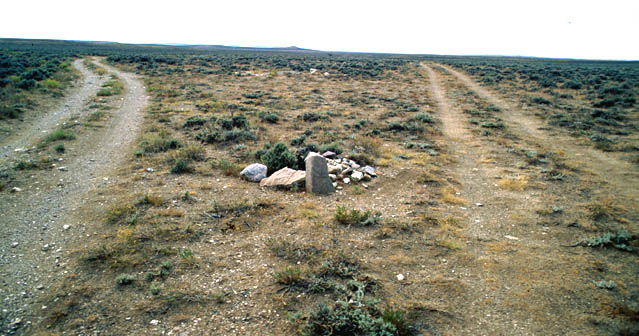
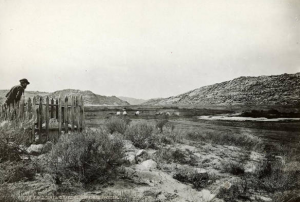 Nils C. Flygare, a companion of Henry Harrop, relates his experience as “We left New York the same day we landed and on the steamer St. John went up the Hudson River to Albany, a beautiful trip. It looked as though we had come to the promised land indeed, but this was not to be kept up, for we had yet to pass through the great American desert. From Albany we went by rail via Rochester, Buffalo, Detroit, Chicago, and Quincey to St. Joseph on the Missouri River. We took steamer at St. Joseph for Wyoming, Nebraska where we arrived on the 13th of June. Wyoming was a new outfitting place for our people, heretofore Florence north of Omaha had been the place, but now we were about 40 miles south of Omaha in a wilderness. Here we were introduced to western civilization, such as cowboys, bullwackers, prairie schooners, lassos, and many other western accomplishments. The Utah boys who had come down to the river with teams, to bring up the emigrants, did not impress us with much favor as favorable. They had of course laid
Nils C. Flygare, a companion of Henry Harrop, relates his experience as “We left New York the same day we landed and on the steamer St. John went up the Hudson River to Albany, a beautiful trip. It looked as though we had come to the promised land indeed, but this was not to be kept up, for we had yet to pass through the great American desert. From Albany we went by rail via Rochester, Buffalo, Detroit, Chicago, and Quincey to St. Joseph on the Missouri River. We took steamer at St. Joseph for Wyoming, Nebraska where we arrived on the 13th of June. Wyoming was a new outfitting place for our people, heretofore Florence north of Omaha had been the place, but now we were about 40 miles south of Omaha in a wilderness. Here we were introduced to western civilization, such as cowboys, bullwackers, prairie schooners, lassos, and many other western accomplishments. The Utah boys who had come down to the river with teams, to bring up the emigrants, did not impress us with much favor as favorable. They had of course laid 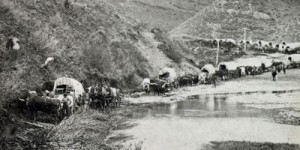 for months on the plains were dust, rain and sunshine had taken the shine off them pretty well so they looked rough and ready. But on nearer acquaintance we found that beneath the torn and tattered apparel beat a kind and willing heart. Immediately on our arrival at Wyoming we received provisions from the church agent, consisting of flour, pork, dried apples, rice, sugar and also, soap for washing. We had now to learn the art of cooking in the wilderness, without stove or fireplace and I am satisfied from my own experience that most of us never did learn it, while traveling across the plains. We laid in camp until the 4th of July waiting for our outfit of oxen and wagons to bring us to Salt lake City. While laying here waiting a young girl from Gothenburge got drowned in the Missouri River and another young girl died from injuries received on the railroad. Our company consisted of 58 wagons with 4 yoke of cattle to each wagon. W. (William) B. Preston was captain of the company. It was a very weary and long journey. Our company arrived in Salt Lake City on the 15th of September a very sorry looking lot after such a long and weary journey of over one thousand miles.” Andrew Christian Nielson, another companion of Henry, said: “I should wish very much if I could show the young generation now living some of the scenes of that trip. Think of a condition here one morning in July after a tremendous struggle in getting those wild animals yoked up and hitched to the wagon, three to six yoke to each wagon, loaded with goods from 3500 to 8000 pounds on each wagon. Then think of the teamsters just as wild and ignorant about their business as the oxen. And then most of them could not understand a word of English so the captain hollering and commanding only caused confusion.” Henry arrived in the Salt Lake Valley in the fall of 1864.
for months on the plains were dust, rain and sunshine had taken the shine off them pretty well so they looked rough and ready. But on nearer acquaintance we found that beneath the torn and tattered apparel beat a kind and willing heart. Immediately on our arrival at Wyoming we received provisions from the church agent, consisting of flour, pork, dried apples, rice, sugar and also, soap for washing. We had now to learn the art of cooking in the wilderness, without stove or fireplace and I am satisfied from my own experience that most of us never did learn it, while traveling across the plains. We laid in camp until the 4th of July waiting for our outfit of oxen and wagons to bring us to Salt lake City. While laying here waiting a young girl from Gothenburge got drowned in the Missouri River and another young girl died from injuries received on the railroad. Our company consisted of 58 wagons with 4 yoke of cattle to each wagon. W. (William) B. Preston was captain of the company. It was a very weary and long journey. Our company arrived in Salt Lake City on the 15th of September a very sorry looking lot after such a long and weary journey of over one thousand miles.” Andrew Christian Nielson, another companion of Henry, said: “I should wish very much if I could show the young generation now living some of the scenes of that trip. Think of a condition here one morning in July after a tremendous struggle in getting those wild animals yoked up and hitched to the wagon, three to six yoke to each wagon, loaded with goods from 3500 to 8000 pounds on each wagon. Then think of the teamsters just as wild and ignorant about their business as the oxen. And then most of them could not understand a word of English so the captain hollering and commanding only caused confusion.” Henry arrived in the Salt Lake Valley in the fall of 1864.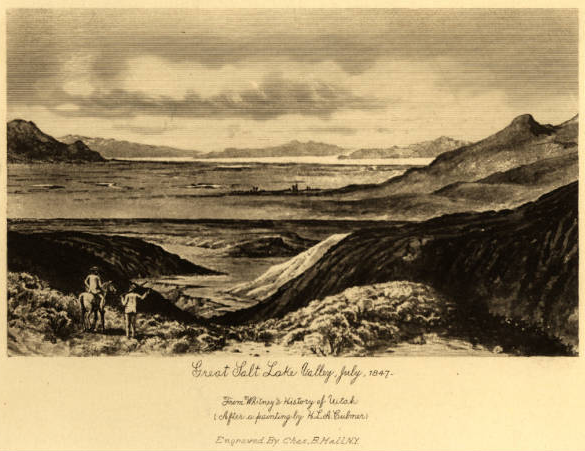 The transcontinental railroad reached Utah May 10, 1869, and from that time on emigrants could ride the rails all the way to Zion. From these two railheads, at Laramie and Benton, Mormon emigrants would have picked up the Overland-Bridger Pass Trail, followed it to Fort Bridger and then taken the Mormon Trail into Utah.
The transcontinental railroad reached Utah May 10, 1869, and from that time on emigrants could ride the rails all the way to Zion. From these two railheads, at Laramie and Benton, Mormon emigrants would have picked up the Overland-Bridger Pass Trail, followed it to Fort Bridger and then taken the Mormon Trail into Utah.
/-1.2805,53.4931,12/300x200@2x.png?access_token=pk.eyJ1IjoiamJlcmdlbiIsImEiOiJjanRxb3d1NWgwaHBuM3lvMzJ3emtyNWY4In0.xCCZGVjZrBAKn5C_O6q8CA)
/-111.8413,33.3062,12/300x200@2x.png?access_token=pk.eyJ1IjoiamJlcmdlbiIsImEiOiJjanRxb3d1NWgwaHBuM3lvMzJ3emtyNWY4In0.xCCZGVjZrBAKn5C_O6q8CA)